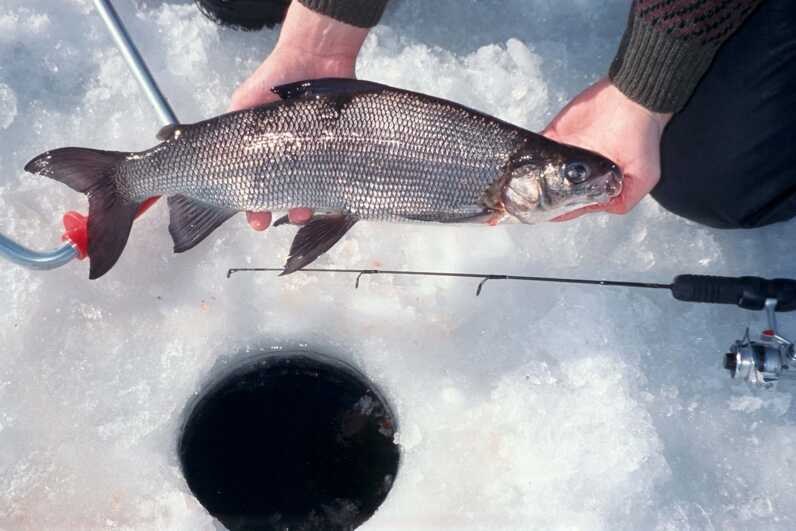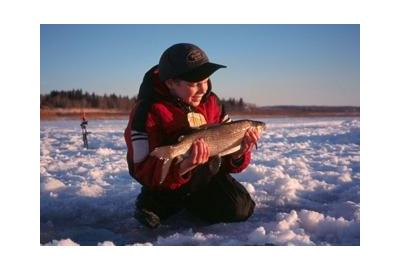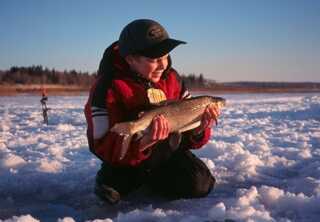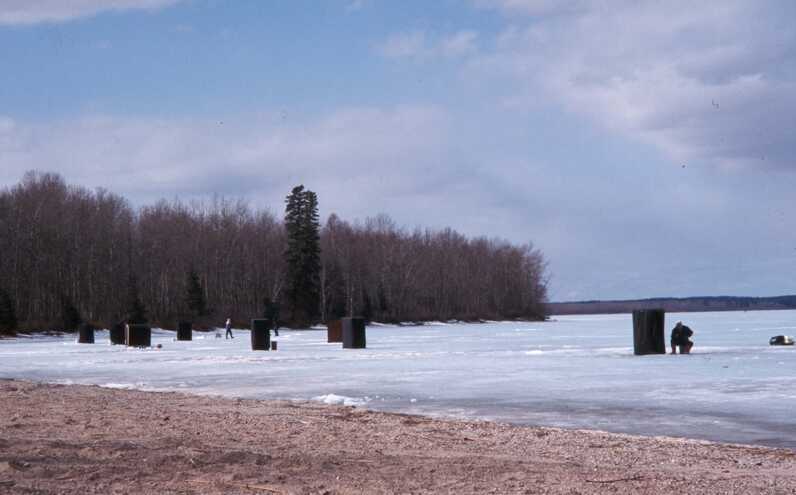Whitefish will be front and center for the duration of the ice fishing season and like I mentioned in the feature article, the burbot spawn will kick the whitefish action into high gear. After the spawn the action doesn't stop, it simply shifts. Where the whites were flooding the shallow gravel and sand flats eating burbot eggs they now relate to weedy areas looking for a major feed on all those little buggy things.
I've had a ton of good fishing setting up alongside the cattails over and near underwater weeds. The Aqua Vu underwater camera comes in real handy for this type of fishing. Drop the lens down and look around the shallow, weedy areas. Most times if whites are around they'll be swimming here, there and everywhere.
It seems that as the days get longer and the ice starts melting, the whitefish go on a massive feeding binge. In fact, I've had amazing fishing near last ice when there's so much melt water streaming into my ice fishing hole that I can no longer see down. When this happens, I'll do a little bobber fishing. Quite often whites cruise and feed just under the ice when it's melting. All that's required is a tiny bobber and about four feet of line tied to one of the nymphs I mentioned earlier. Just give the bobber a wiggle from time to time and watch. It shouldn't take long for the bobber to sink and at the hook set there should be a tasty whitefish wrestling you for the hook.


This great fishing will continue until the ice is either no longer safe to walk on or there is a spring fishing closure. Until that happens enjoy the warmth of the spring sun and the great fishing the whitefish will bring.



